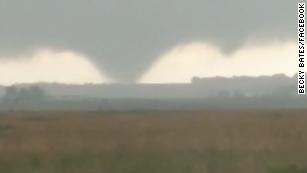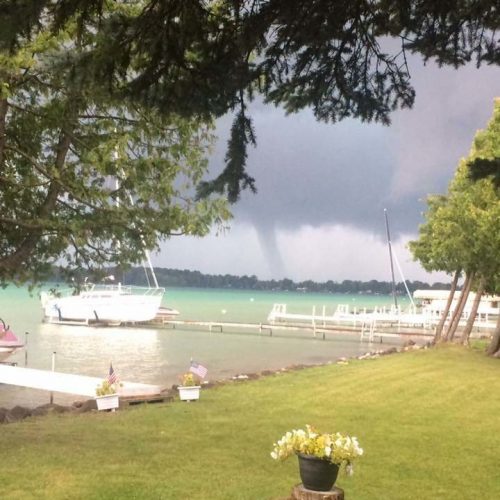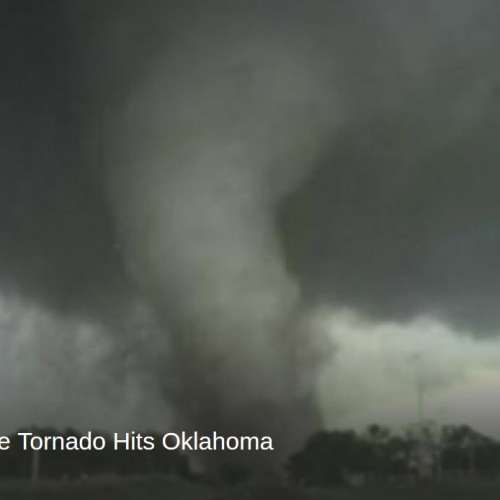Topeka residents Linda Canady, Garry Cushinberry recall the terrifying twister:
Fifteen-year-old Linda Canady had heard the tornado sirens before, but when they started screaming on June 8, 1966, she could feel this time was different — the threat was real.
She grabbed a chair, book, blanket, candle and some matches and rushed with other family members to the dirt-floored basement of her home at 1415 S.W. Western. Soon, she heard what sounded like a freight train pass over the house, and a small window in the basement, which wasn’t bolted very well, began vibrating.
“I can remember it vibrating and my uncle trying to hold the window in place as the winds picked up,” said Canady, an independent sales director for Mary Kay Cosmetics. “You could hear the sound, and you could hear the debris. It was like nothing we had ever been through before. … Here we all were in the basement, huddled with my blanket over us.”
After the noise had ceased, the family came up from the basement to find the house mostly intact.
“When we opened the front doors and stepped out, I can remember my first words were, ‘Oh, my god,’ because it was as though there was a forest that had collapsed in the front yard,” she said. “There were so many trees and so much debris. It was all in the yard, down the street. It was just devastation.”
Garry Cushinberry, senior vice president of community relations at CoreFirst Bank & Trust, remembers the tornado through the eyes of a 9-year-old boy who was playing in the street near his home at 1919 S.W. Fillmore when he heard his father hollering for him to come home.
“There was a tone in his voice that meant, ‘Come home right now.’ So I can remember running as fast as I could down the middle of the street to get home,’ ” Cushinberry said, recalling how they, too, went to the basement of their home and heard the rumbling of the tornado as it passed over the structure.
“You could see the debris, doors and trees and all kinds of things,” he said, describing what he saw from the basement through an open door facing south.
Cushinberry’s mother and baby brother were at a friend’s house at S.W. 13th and Van Buren during the storm, and he recalls being in the family car as his father drove through the debris-cluttered streets to where his mother and brother were.
“I remember my dad being scared, just fearful … trying to navigate through the streets down through trees, downed power lines,” he said. “I remember when we did come back home, going down into the basement and just still being terrified. It could come back. We just didn’t know.”
Longtime friends Canady and Cushinberry recently came together for a conversation about the tornado with Darren Canady, an assistant professor of playwriting at the University of Kansas who is Linda Canady’s son and a member of the editorial advisory board at The Topeka Capital-Journal.
Darren: So 50 years on, we’re now 2016, obviously so much history has happened in Topeka since then. I wonder what you think we, as Topekans, have inherited from that event.
Linda: I think resilience as much as anything.
Darren: And how do you define resilience?
Linda: Well, it’s realizing you’re not in control of everything. You truly are not, but you’re still living. You can survive it. You can deal with it, somehow you can handle it. And I think that’s part of the legacy of this community: That while it was devastating, absolutely devastating, you can survive. You can still thrive.
Garry: A couple of things jump out at me. One of them is Washburn University, how it has rebounded to be the beautiful campus it is today, and what’s even more important is how giving the Topeka community has become. If a call goes out that somebody needs help, an organization needs help, Topekans rise to the occasion.
Darren: (Referencing the mythology and depiction of tornadoes by such movies as “The Wizard of Oz” and “Twister”), if there is something that living through the ’66 tornado taught you … that you wish other people could understand about what it means to actually survive and live through the event of a tornado, what would that be?
Linda: I think it’s become more of a universal understanding that tornadoes are absolutely destructive. There is no controlling them, no running away from them. It is a power that needs to be respected.
Garry: I think the uniqueness is how far we’ve come from (then-WIBW broadcaster) Bill Kurtis saying “For God’s sake, take cover” to where I can now know there’s a tornado down in Oklahoma, I can tell you the path, and they can almost predict the time it’s going to be in your area. We’ve come such a long way since 1966, and I think to me that’s the legacy — from where we were then to where we are now, and I can only imagine where we will be 50 years hence with the reporting and prediction of tornadoes.
By Jan Biles
jan.biles@cjonline.com
Posted: June 5, 2016 – 7:58pm
Photo: Dan Moore





